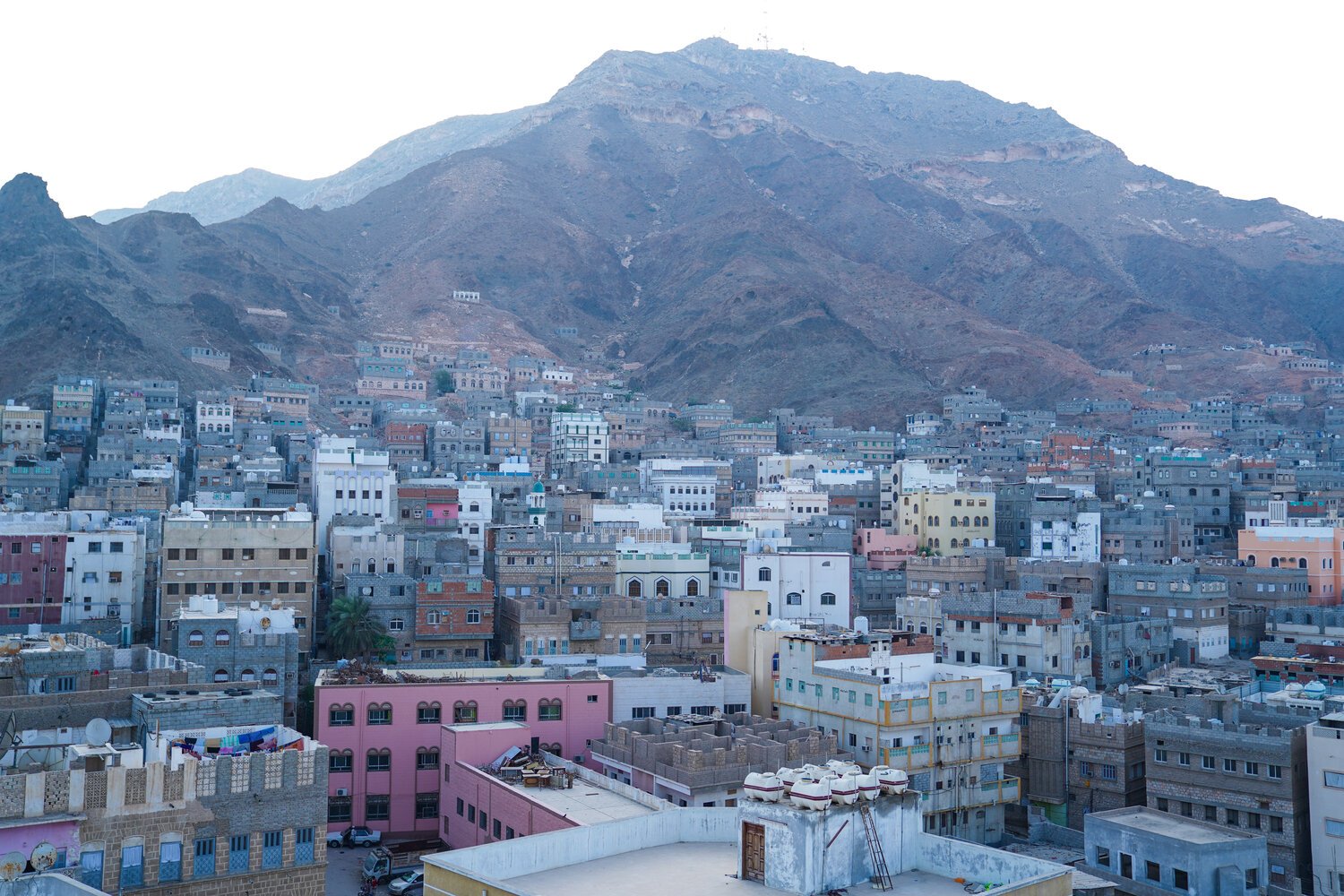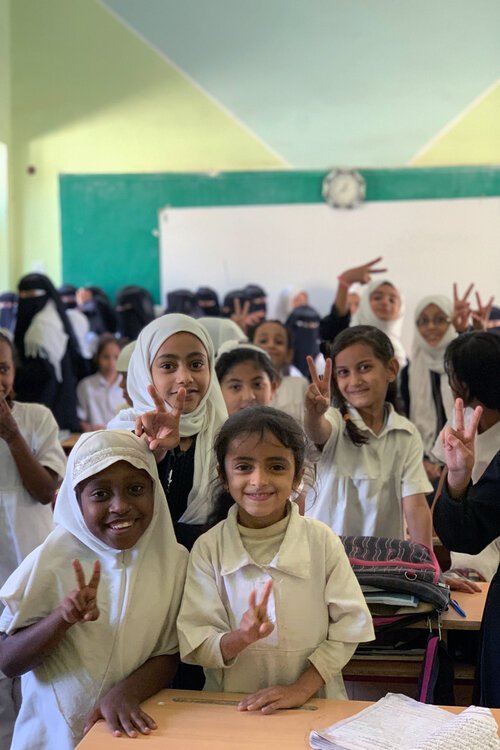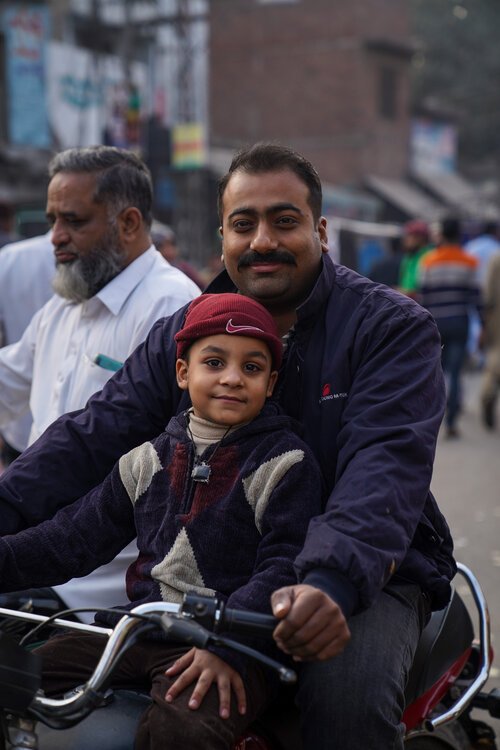MENA Through the Lens with Robyn Huang
MENA Through the Lens is a photo series from Canadian writer and photographer Robyn Huang documenting her six month journey through some of the most challenging countries in the Middle East and North Africa in 2019.
Before jumping into the photos, I wanted to learn about the motivations behind Robyn’s work and the reason why she decided to embark on this journey. Here is what she had to say:
““I think the way the world has changed, and it is not so easy to evoke feelings in stories through written word as it was back in the day. I think with people’s attention spans, it is harder for them to read a book or a long form article. So the power of a picture nowadays is that it can tell a hundred stories just through one visual. The ability to tell a story through a picture is a very powerful thing.
For me, this journey was more so about wanting to reconnect with life. I wanted to understand the ideals behind what makes a person resilient and strong, and I felt I could not find this at home, and so I wanted to go to certain places where I might be able to experience the good and bad sides to humanity.
The photographs came second. I wanted to talk to people, understand their stories, understand their emotion, and understand why after they have gone through so much, what makes them want to survive another day.
I found that through talking to people and connecting to communities, learning about their struggles and challenges, and caring about their issues, I gained an understanding and empathy for why, when everything was going absolutely wrong, they still wanted to live. A lot of that was because of a grounded love for others. They did want to survive for themselves, but beyond that, they wanted to survive for the people they move most in this world.
This theme resonated through especially when I spoke with people in Aleppo, Iraq, Mali, who had to start completely from scratch. These were people who may have seen their daughters raped or family members killed, or had their homes shell-bombed among other atrocities. ”
Cover image: A Tuareg family walks to their homes in the remote desert of Northern Chad near the town of Fada. Many of the families in this region rely on camel herding as their main source of income, and the towns were created around hand drawn wells, an essential water source for the villagers.
Top left image: In the town of Segou, Mali, a man prepares a blend of herbs used to make indigo dye. This herbal blend is used to stain textiles, where they are then set out to dry.
Top middle image: In the northern Pakistani town of Gilgit, my guide (through Inertia’s Pakistan program) was able to convince the chef to trail him to the kitchen where he proceeded to remake the entire chicken karahi dish for us from scratch.
Top right image: A Pashtun man pours a cup of green khawa tea in the old bazaar of Peshawar city in Northwest Pakistan’s Khyber-Pakhtunkwa region.
Above image: As the sun sets upon the Niger River in Mopti, Mali, fishermen return home to their floating villages.
“I wanted to spend some time on the river. I am drawn to both bodies of water and sunsets. There is no sunset in the world like a glowing, warm African sunset.”
Top left image: Women wearing traditional Afghan chadris (burkas) and children beg for bread handouts from a bakery just before closing in the Pakistani city of Peshawar.
“This image was caught really quickly and I felt very guilty about taking the picture, because they were obviously trying to beg for food. Shopkeepers may give out offerings as an act of kindness at the end of the day as a form of zakat. The women were huddled down with their hands extended, and there were some children there too; you can see them up in the front.
Top right image: A brother and sister prepare their breakfast of tea and roti in the village of Tarishing, Pakistan.
“I stayed with this family in their homestay for two nights while hiking around Rupal valley. These were the younger children having their breakfast before going off to school. The roti was rolled out and baked homemade by their older sister on a wood burning stove.”
Above images: These images depict two different schools in Niger.
The image on the left, taken in the northern city of Agadez, is inside the girls’ Saturday Quranic school. The girls were studying the Quran by reading verses written on writing tablets in the school. The school functions almost like a daycare, as the parents will leave their children here while they work. The schools are private and cost about 25 Francs (about $0.04 USD) for the day.
The image on the right is in the courtyard of a public girls and boys school in the southern city of Zinder, on the girls side as they finish their classes for the day.
Above and left images: A series of three images captured in the Syrian city of Aleppo in 2019 after the war.
“I was walking around alone in the evening exploring the outskirts of the city; this area was hit the hardest by bomb blasts and shell-bombing. I was yelled at by some guards in the area, but managed to take the two images above.”
The image to the left shows the burnt out Aleppo souq: “Within this whole area, there are structural engineers from Syria and abroad, working on initiatives funded by the Aga Khan, to figure out places where things may collapse next, and how they can build back up the bazaar.”
“I am going to be quite honest. I wanted to see what happened after the war and what people were doing to start over. While they were very emotional, people were very forthright and honest about their stories.”
Left images: The two images to the left were both taken in the souq of Al Mukalla, Yemen. The image on the far left depicts a honey seller, as Yemeni honey from the Hadhramaut region is prized throughout the Middle East. On the near left, this man was selling prawns inside the Mukalla fish market.
“The wonderful thing about Yemen, for me (as a women in an abaya and niqab with a camera out), is that people wanted their photos taken; especially men, and if I asked nicely, men with children. I found that women however, only could be photographed from the back, as it was much more difficult to gain their approval.”
Above image: Boys pose for a photo in the outskirts of Niamey, the capital city of Niger near the Niger River.
“I did not have much time to explore the city, but when I got in I had enough time to walk around the river at sunset. These boys thought I was Japanese. They kept on saying ‘konichiwa’ to me and then asked to pose for a photo. I found their expressions so poetic for a young group of men.”
Above three images: These photos feature portraits of Kalasha women in Pakistan’s remote Kalasha valley in the far northeast of the country on the Afghan border. The Kalasha are the only remaining non-Muslim ethnic group in Pakistan. In December they celebrate the Chawmos winter holiday, involving dancing, fire and drinking to welcome in the new year.
“We went up there for the winter festival, which is used to commemorate the end of a successful farming season and create hope for another good year. They are a non-Muslim community, but they cohabitate peacefully with Muslims. There are concerns that there may be an extermination of their culture, as more residents convert to Islam and intermarry with the surrounding Muslims. But, they remaining people make great strides to celebrate and conserve their heritage and traditions.
I found the women fascinating. They were all dressed up in their traditional clothing for the festival. The women were preparing bread for the community and we sat with one of the moms as she prepared flattened walnut bread for the subsequent evening dancing rituals. The Kalasha people were very receptive to photos, which was a contrast from other places I had been to in MENA. They are friendly, open and progressive society. They make distilled wine, dance into the night, and are just a warm and welcoming community.”
Above images: A voodoo doctor from Segou, Mail prepares animals for sacrifice and details a palm reading in his notebook using various tick marks.
“I was offered to spend some time with him. As a disclaimer, I had a guide in Mali for precautionary reasons. I told him about my motivations for the journey and my own life changes. He started telling me how he and his wife would see Voodoo doctors and how the practice of animal sacrifices had helped them throughout their lives.
The premise of the sacrifice is that you give and get something back in return, because it is meant to be a philanthropic act. He reads you and every aspect of your life, whether relationship or career aspects, and general observations.
He pretty much read me spot on in terms of my insecurities and what was going on in my life. From my reading, he determined the sacrifice— a goat, sheep, chicken, kola nuts, and milk. All of this was distributed in philanthropic ways to the community - clergy men at the mosque, homeless children, and vulnerable women in the community.
I asked him and others whether there is a clash between ideologies— between Islam and Voodoo. The general consensus was ‘no’ as they work in conjunction; these types of rituals are not seen as haram (forbidden). Malians who practice both ideologies, tie their practices back to philanthropy to spur their religious motivations. It is their way of doing good for others in the community.”
Above three images: Sufi practitioners dance around a mosque in the outskirts of Khartoum, Sudan for Friday prayers.
“On a weekly basis, all of the Sufi clergymen engage in dancing and chanting rituals around the mosque. The men dance in a tight circle, and the higher religious leaders then lead the others on a pathway back into the mosque for further rituals. Women of course dance on the outskirts. The whole ceremony is high energy and engaging for everyone participating and observing.”
Above image: A panoramic view of the Yemeni port city of Al Mukalla against the rising mountains. Al Mukalla is the largest city in Yemen’s central Hadhramaut region. In 2015 the city fell to Al Qaida in the Arabian Peninsula (AQAP), who subsequently held the city for nine months, extracting significant economic benefit from the capture.
“This was my first glance into Yemen, with all the striking, colourful buildings; and my first true interaction with the country after driving 12 hours overland from Oman. I walked around and did not feel any tenseness, but this was perhaps because my guide engaged in conversation with a lot of the stall owners in the souq and around the city. Everyone seemed very friendly and receptive in the city. This observation applied to men only as women tended to be covered up in abaya and niqab, and I had few opportunities to interact with any females on this leg of the journey.
My guide insisted I not cover my face here, but I think he was just trying to show off that he was with a foreign women—a “look-at-me” kind of an attitude.”
Far left image: A Tuareg man wearing a full head covering stops by a well to gather water. Wells provide an essential need to the communities, and are traditional draw string wells, sometimes drawn by people, other times by camels. The water is generally dirty, but passed through filters before drinking.
Close left image: Camels wait at a wadi entrance - Guelta D’Archei - in Northern Chad, as the water was still too cold for them to enter the canyon. This is a popular drinking spot for camels in the area and semi-nomadic Tuareg people lead them here on a regular basis.
Top left image: Girls pose for a photo at a middle school in Seiyun, Yemen.
Middle image: A women’s vocational school in Zinder, Niger. Here, older women train younger women to sew and knit fabrics as a way for them to earn some income and learn new skills in order to become more independent. Even still, they are only able to earn about 2,500 Francs a month doing this kind of work (under $4 USD), which is not nearly enough to live on. This is supplemental income.
Top right image: Children gather for a Saturday Quranic lessons in a makeshift school in Agadez, Niger. They learn Arabic and how to conduct prayers here.
Above image: Sunset on the Niger River in Mopti, Mali. Local people use these narrow boats to travel from the main town of Mopti to the outlying villages on the river.
“The Niger River has increased navigation potential, and while bigger boats are able to traverse the river, they have all ceased operations due to increased piracy and robberies. Mali unfortunately has slipped into a state of increased lawlessness. These small boats are therefore used as the main transportation. I heard stories of boat captains creating hidden compartments in their vessels to hide their belongings and money in case they get robbed.”
Top three images: These images depict slices of life from Pakistan. The first two were taken in Lahore, a father and son on a motorcycle and a beautiful yellow mosque. The last image was taken in the Swat Valley in December. A group of Pashtun men sit outside a shop along the road.
“Driving through Swat was different. It is almost like you have this feeling that you have crossed the other side of the tracks. It is markedly different. You can see a dynamic change, and feel the difference in the villages and in the people.
Of course the biggest difference is the fact that you do not really see women or girls walking around. There was also a tenseness in the faces of the men. Swat does not have the same progressive feel that you experience in the rest of Northern Pakistan; rather, it feels very conservative and hardliner.”
Far left image: A street scene from Lahore, Pakistan.
Close left image: A view from the rooftops in Northern Pakistan’s Hunza Valley.
“I was just observing from the rooftop, and I remember saying to myself that this feels like the town water cooler area. Women were just standing around and gossiping with each other.”
Above three images: People gather for Friday prayers around the Grande Mosque in Agadez, Niger - the tallest mud-brick structure in the world.
“I got right off the plane and it was noon so I caught Friday prayers from the top of my guesthouse. It was a unique experience for me because this was the first time I had ever seen people lined up praying on the streets.
This mosque is symbolic to the surrounding villages, so people will travel in from those villages essentially for the Friday prayers, and for the access to the Sultanate and clergymen here for their Friday service. They will fill the entire mosque. If you step inside you will see that there are separate enclosures for men and women, and the rest of the people will just spill out into the streets.
Afterwards, when Friday prayers were done, I was able to climb to the top of the mosque for a 360 degree view of the entire town.”
Top left image: Lifejackets left by refugees fleeing the Middle East, Southwest Asia and Africa lie piled up on the shoreline on the Greek Island of Lesbos.
“The lifejacket graveyard is symbolic of refugees defecting from various places - Syria and Afghanistan - trying to get to Europe. They crossed over from Turkey to the nearby Greek Island of Lesbos. If they make it to the island, they drop their lifejacket behind.
The sadness behind this is that these lifejackets came at a pretty steep price. Some of them did not even have the proper padding inside. If they were unlucky and their vest did not have proper padding and the boat capsized, then there is a good chance they did not make it. There are many instances where I heard stories of boats capsizing. This photo serves to document the treacherous journey refugees make to seek asylum. Lesbos has one of the largest refugee camps in Europe - Moria.”
Top right image: A Syrian flag is painted within an outline of Syria on the door to a closed shop in Damascus.
About the Photographer
Robyn Huang
Robyn is a Canadian writer, photographer and former banker from Toronto. She is passionate about writing on mental health topics and using travel as a medium to better understand people's traumas and how they've found resilience and the will to live despite their circumstances. She uses writing and imagery as a tool to tell stories of human suffering and hope, reflecting her personal journey with mental health. Follow her at @ror0roror0ro.









































